The Cornell Lab Bird Academy › Discussion Groups › Nature Journaling and Field Sketching › Filling Your Sketches with Color
-
1. I am still not confident in completing the field sketching in the field, so I've been using my backyard where I can have a chair and a table. Otherwise I have to leave painting to an indoor activity. 2. I've been trying to still notice as I draw, like the color of new growth even though the majority of the leaves in the Winterberry Holly are falling off and that is a single berry that was produced. I need to get better about creating hypotheses for my observations. 3. I tried some of the "dry brushing" on the bark, but I had to use a lot of layers.

-

-


-


-
my Cedar Waxing painting...

-
I was guiding a wildlife boat tour yesterday morning and took the opportunity to arrive early at dawn and try a landscape sketch and painting. For my first time painting with watercolors in the field, I settled into the experience fairly quickly and just gave it a go! I was surprised at how it felt natural organizing my materials on my lap, I thought it would be more awkward but it was comfortable and easy to handle. I sat on a small folding tripod stool and had my sketchbook on my right leg and my watercolors on my left leg, and a paper towel to clean my brush tucked underneath the watercolors, and pulled it out when needed. Once I got into the painting I recalled and used many of the color-mixing and watercolor techniques Liz talked about, and I was surprised at how many different colors I made in a short time. My sketchbook pages are a little small, but if I had the space I would have noted more birds I heard while I was sketching and painting. I finished most of the watercolor work in the field and then did some additional refining at home (I took some pictures while I was there for reference).

-

-
May 2, 2023, Connecticut. I have been very happy with this Koi watercolor set, and find it quite handy to use in the field. I've noticed in the videos that Liz used the pallet in different positions, so I tried that in my field sketching today. If my sit spot is close to the car I bring a folding chair, otherwise I choose a spot with a large rock or something to sit on. Other than the paints and water brush, I bring a pencil, eraser and my binoculars (and a rain jacket!). I love how simple this kit is. Somebody below suggested the cuff of a cotton sock worn around the wrist for blotting the brush, instead of paper towel (which inevitably blows away!). This sounds like a winner - I'll try it!
 I'm usually overwhelmed when I sit down to a landscape, and found Liz' suggestion to define the planes and layers you see and to gradually block in the areas of color were really helpful. And for some unknown reason today, I was also able to control the waterbrush better, and get some fine lines. Win, win, win! I loved the dramatic sky, but it changed so quickly. I'm glad I took a photo when I first sat down, because the light was so different by the end. This sketch was start to finish 45 minutes - enough time to capture the mood of the moving river and the heavy clouds before the rain returned!
I'm usually overwhelmed when I sit down to a landscape, and found Liz' suggestion to define the planes and layers you see and to gradually block in the areas of color were really helpful. And for some unknown reason today, I was also able to control the waterbrush better, and get some fine lines. Win, win, win! I loved the dramatic sky, but it changed so quickly. I'm glad I took a photo when I first sat down, because the light was so different by the end. This sketch was start to finish 45 minutes - enough time to capture the mood of the moving river and the heavy clouds before the rain returned!

-

-

-
Does anyone have any tips on what I can use to hold my watercolor paper, palette, etc while painting outside? I see from the video that Liz has all of her gear propped on something--but what? Thanks, James
-
 Saw some of these by the roadside yesterday, sketched & painted one from a reference photo today.
Saw some of these by the roadside yesterday, sketched & painted one from a reference photo today. -
Cool! 😀
-
Bluebirds are my favorite! Nice job!
-
-
I decided to draw and paint the Cedar Waxwing. Yesterday was the first time that I saw one. So, I though that it was a good opportunity to start practicing looking the picture on the video.

-
I'm laid up with a sore leg, so I haven't done watercolor in the field yet. Drawing is relatively easy, but you can still do a lot of juggling if, like me, you have the journal, binoculars and camera at the same time, not to mention incidentals and water. I have a courier's bag I use for all that. Today I did my first attempt at a landscape while looking over my deck to the woods out back. It was a dreary, rainy, grey day, just perfect for watercolor. Came out pretty nice! The lone evergreen is too green, but that's learning for you. I ended up doing mixed media, I guess you'd call it. I don't have the control to do really fine detail with the brush, at least not yet, but pencil worked great.

-
Leslie, this painting makes me smile. I see a place you love, I see home. Beautiful.
-
-
I continue to feel clumsy balancing the journal and implements. Considering investing in a folding chair that includes a side table. I take photos and complete work at home incorporating additional information.

-




-
I like to take the absolute minimum of things that I need to draw. When I did the picture in the photo below, I took a pencil, eraser, water brush, one paper towel, and my 12-colour mini watercolour travel set. It worked pretty well. The only problem was there were about 10 aggressive geese who wanted to eat my supplies so I kept moving around so they wouldn't bite me. I did wet on wet for the water, sky, and grass and feeble attempts at dry brush for the buds on the trees. As you can see I need practice with it. I find it especially hard to do dry brush with my water brush because some water always leaks out and runs down and ruins the dryness! Regular brushes work better for that in my opinion.

-
1. I quite like working in the field. It takes me 15 minutes or so to settle then I am oblivious to everything other than what I am focussing on. I am only taking my journal, pencil, paper towel, a small scrap of bond paper, paint box and paint brush. Today I forgot to fill my paintbrush - good lesson there. I can manage them okay and find I enjoy the change from drawing to colour when I can start mixing and applying. I am holding the paper towel and bond paper in the same hand as my journal which seems to work okay and stops them blowing away. 2. The questions and purpose side of the work comes after I capture (to the best of my ability) what it is I am working on. That's when I start to wonder. Before that I am very focussed. Once I start wondering it is from a higher level because I have much more understanding of the subject than if I had just taken a photograph. Plus there might be notes I wrote that remind me of more than what would be in a photograph. 3. This is my first water colour landscape, in fact probably my first landscape! Scary!! I had trouble with the sandbar especially but otherwise I am pretty chuffed. Any comments to improve it would be terrific (other than binning it because I won't do that!)

-
1. My tip would be to try out watercolor pencils which I used for the page below as they don't require a palette or even water in the field. They can be used as colored pencils and activated later in the studio. 2. For this exercise I used photos and videos I took a few days back. I think that writing notes while I was observing, photographing and filming the swans helped me to later pick the right photos and video frames which showed the behavior I found interesting. I also noted questions which a little bit of googling later answered (e.g. their aggressive behavior is called busking) 3. As for the technique I started with with warm and cool grey watercolor pencils and added burnt sienna for the brownish feathers which appear on the head and neck and ultramarine for the coolest shadows. I mostly used wet on dry, a little bit of wet on wet, some blending and a lot of glazing.

-
Your drawings are wonderful! I am interested in the watercolor pencils. I use watercolors then do details and texture with colored pencils. I don't have a steady hand so when I use a brush my lines are not thin or straight and edging gets out of control. Do you think watercolor pencils would be a better choice for me? Can you bring them to a very fine point? I like the idea of activating later when you are in a more controlled environment.
-
Wow! That looks amazing! Great job!!!
-
-
Watercolor is so much fun!! I didn’t know we could get such accurate colors just by mixing what we have. I was wondering how I could get the shadows on my birds, as I didn’t have any grey or black in my palette. But just by mixing, I achieved this shadow color which I am very happy with! The lessons are very helpful! I never did watercolor before and it gave me the confidence and knowledge to achieve something good. I think watercolor is also a good tool to become a better observer of the colors in nature. Can’t wait to try it out in the field!


-
Hi Marjolaine, What sort of Gannet is this please? I really like it!
-
-

 I find a flat and comfortable spot to sit and either from my phone's photos or from all around me take a pencil and sketch. I always wait to watercolor until I get home because it causes less trouble. This is an older journal page, but more recently I have used gesture drawing a lot more.
I find a flat and comfortable spot to sit and either from my phone's photos or from all around me take a pencil and sketch. I always wait to watercolor until I get home because it causes less trouble. This is an older journal page, but more recently I have used gesture drawing a lot more. -
Your house sparrows are so perfectly in detail! They are my favorite bird.
-
-
I´m really satisfied with the composition that I got for this exercise, because I think is balanced in terms of shapes and colors, obviously according to the season and their different landscapes and natural motifs, otherwise, sometimes its difficult but step by step, I´m achieving to capture the contrasts, reliefs and tones that nature expresses us and I hope, surprised again for how easy watercolors make it. Usually I investigate to identify with scientific names to know more about what I´m drawing and can share it, and to finish specially in details and with all this information, gather each technique learned in the same picture. I love to see how every natural journalist develop these techniques and personalize it, creating and contributing with really differents points of view or interpretations in their blocks, and that's what makes it interesting.

-
Hi Olivia, I like how you have suggested the sky colour. It's an effective quick way to apply it in the field. I will give it a try I think. Thanks for the idea!
-
-
It’s been pretty cold here since I started this course so I haven’t taken my materials out in the field yet. I’m thinking I’ll take a little knapsack with everything when it warms a little. I do take walks and take time to notice nature, snap photos, question etc. I completed my first attempt at a journal page using photos of things I saw in January. I really enjoyed creating the page and trying out all the techniques I learned in the course. I need much more practice adding value and highlights to achieve dimension as well mixing the right color. I’ve already made notes on design changes to make for my February page.

-
I'm finding that when watching birds, doing quick sketches in my field journal while in the field works well but I can't really get something "finished" until I come home and work at my desk. Details are really hard to get on paper with a moving being! This journal page started as a few pages of quick sketches then moved to more detailed sketches and finally on to color.

-
Finally finished the full page! Adding color is so much fun :)

-
@Ria That’s fantastic! Excellent work!
-
@Ria Wow! Your colors are so accurate! The head of the duck looks very realistic. Congrats!
-
-
 I am thrilled with the knowledge this course has imparted in both drawing and painting. It has been so rewarding. I have not completed this lesson’s exercise of getting out in the field yet. This is my practice at making a painting from start to finish, using a photo from an old copy of Birds and Blooms.
I am thrilled with the knowledge this course has imparted in both drawing and painting. It has been so rewarding. I have not completed this lesson’s exercise of getting out in the field yet. This is my practice at making a painting from start to finish, using a photo from an old copy of Birds and Blooms. -
This is great!
-
I know this may sound weird, but I had too. The antenae on your butterfly look very nice. Mine always turn out like standard alien antenae, straight lines with balls on the end, no matter how careful Iam. Pretty butterfly, too.
-
Absolutely beautiful. I love what you left out too!
-
Read More:
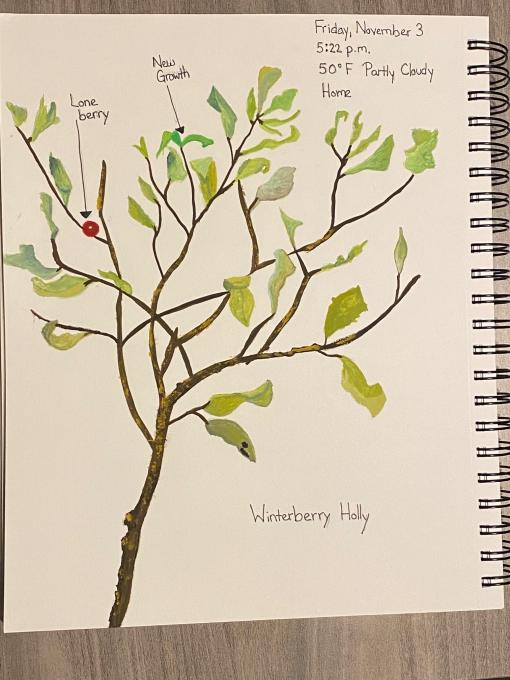
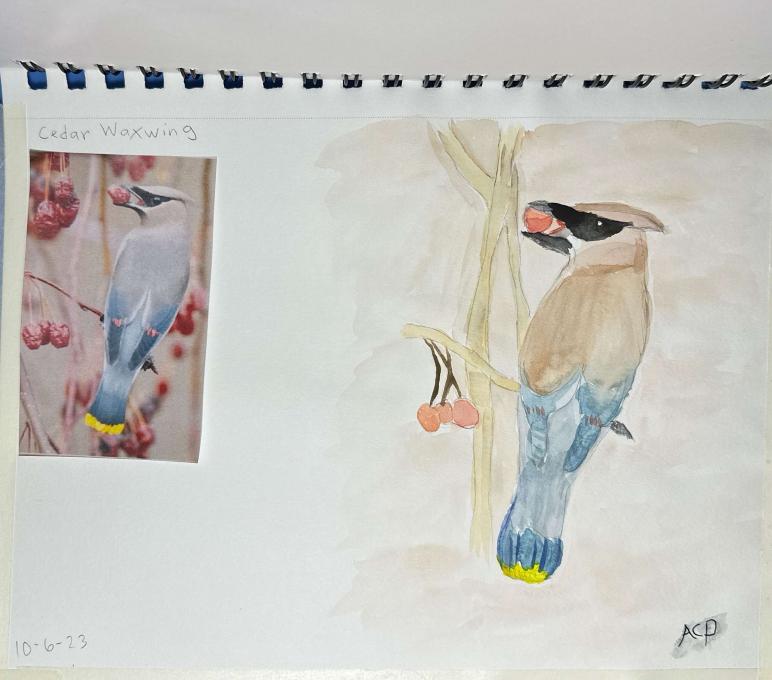
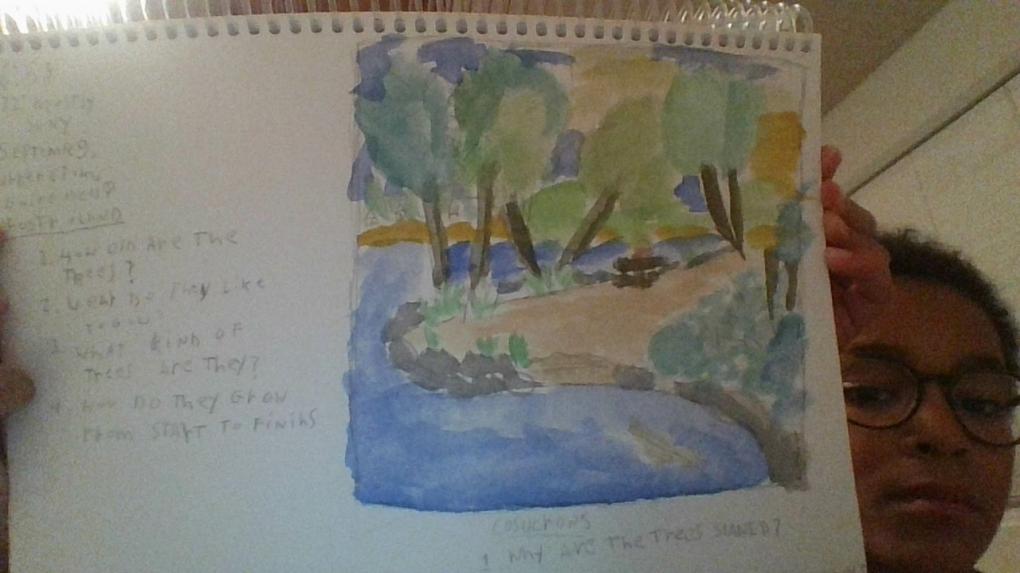
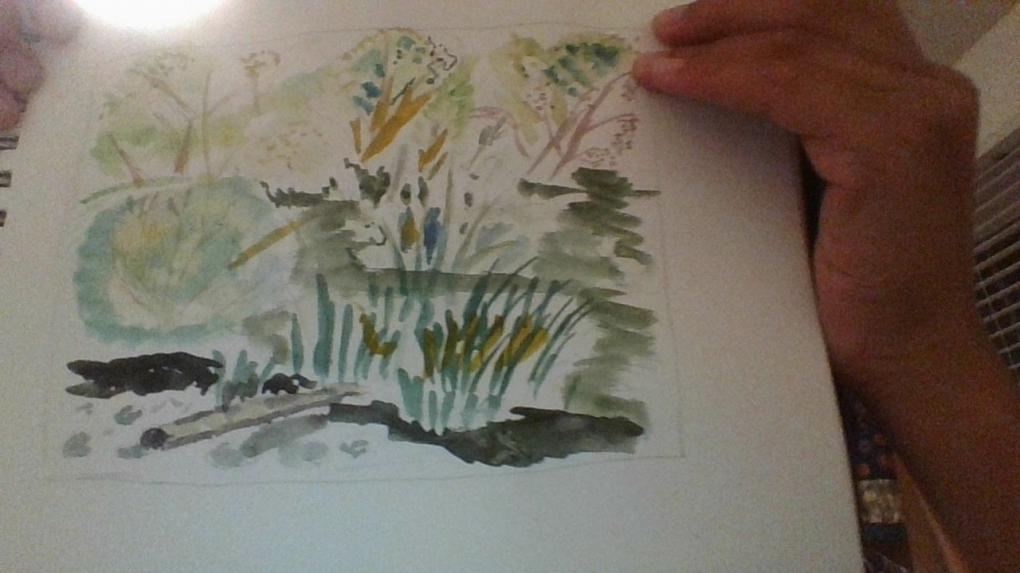

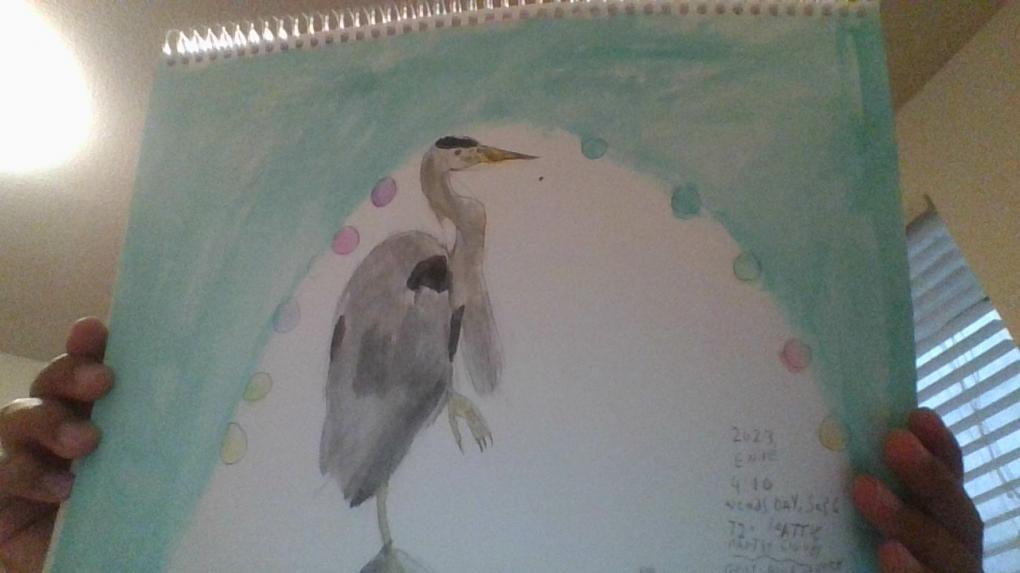

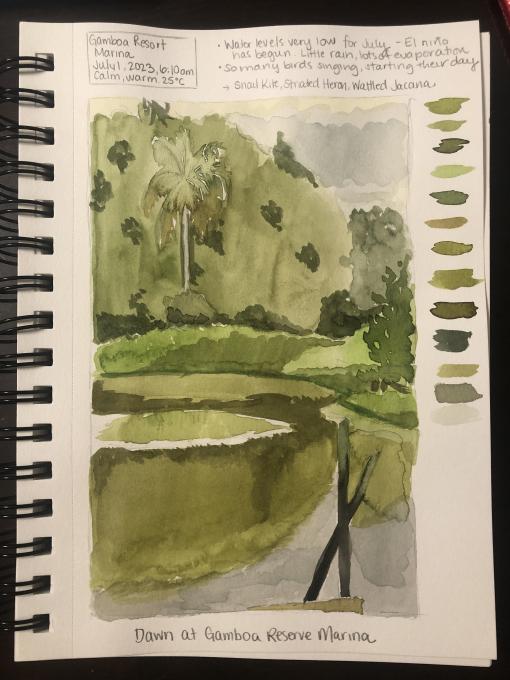
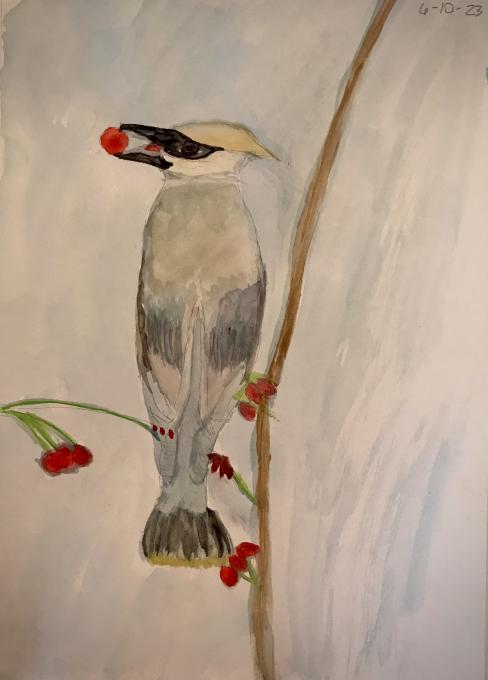
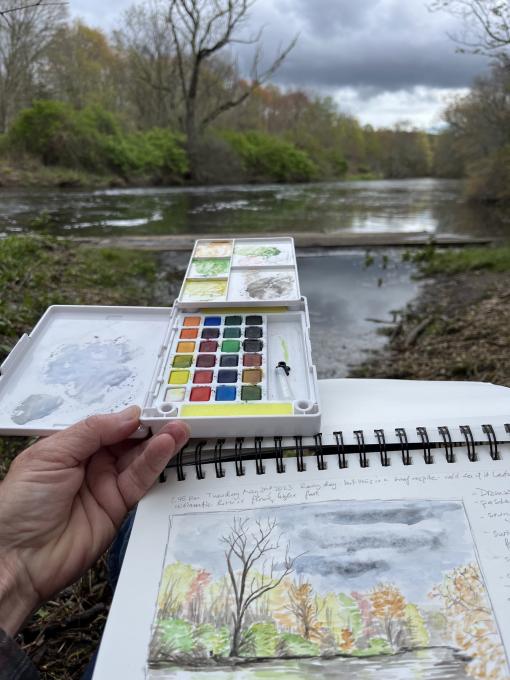 I'm usually overwhelmed when I sit down to a landscape, and found Liz' suggestion to define the planes and layers you see and to gradually block in the areas of color were really helpful. And for some unknown reason today, I was also able to control the waterbrush better, and get some fine lines. Win, win, win! I loved the dramatic sky, but it changed so quickly. I'm glad I took a photo when I first sat down, because the light was so different by the end. This sketch was start to finish 45 minutes - enough time to capture the mood of the moving river and the heavy clouds before the rain returned!
I'm usually overwhelmed when I sit down to a landscape, and found Liz' suggestion to define the planes and layers you see and to gradually block in the areas of color were really helpful. And for some unknown reason today, I was also able to control the waterbrush better, and get some fine lines. Win, win, win! I loved the dramatic sky, but it changed so quickly. I'm glad I took a photo when I first sat down, because the light was so different by the end. This sketch was start to finish 45 minutes - enough time to capture the mood of the moving river and the heavy clouds before the rain returned!


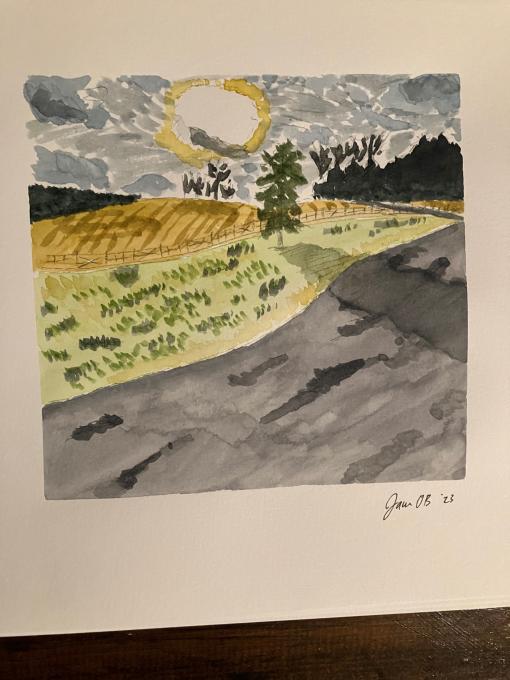
 Saw some of these by the roadside yesterday, sketched & painted one from a reference photo today.
Saw some of these by the roadside yesterday, sketched & painted one from a reference photo today. 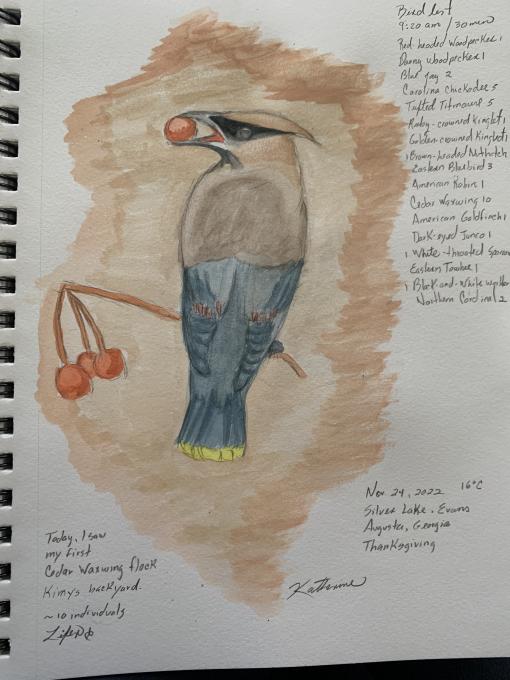



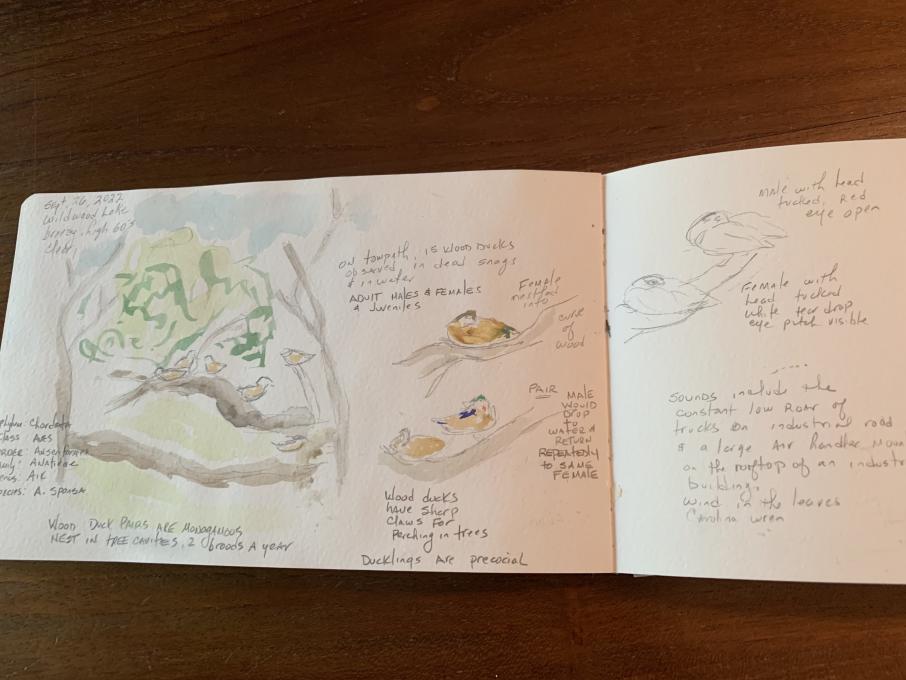


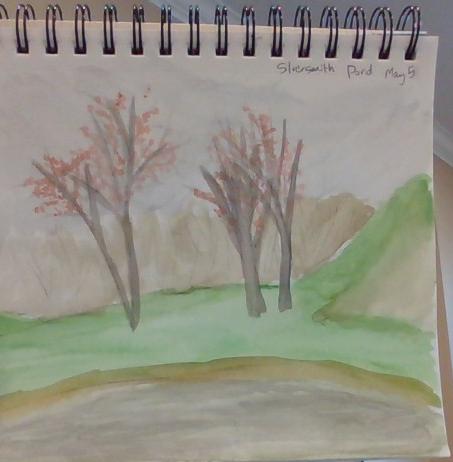
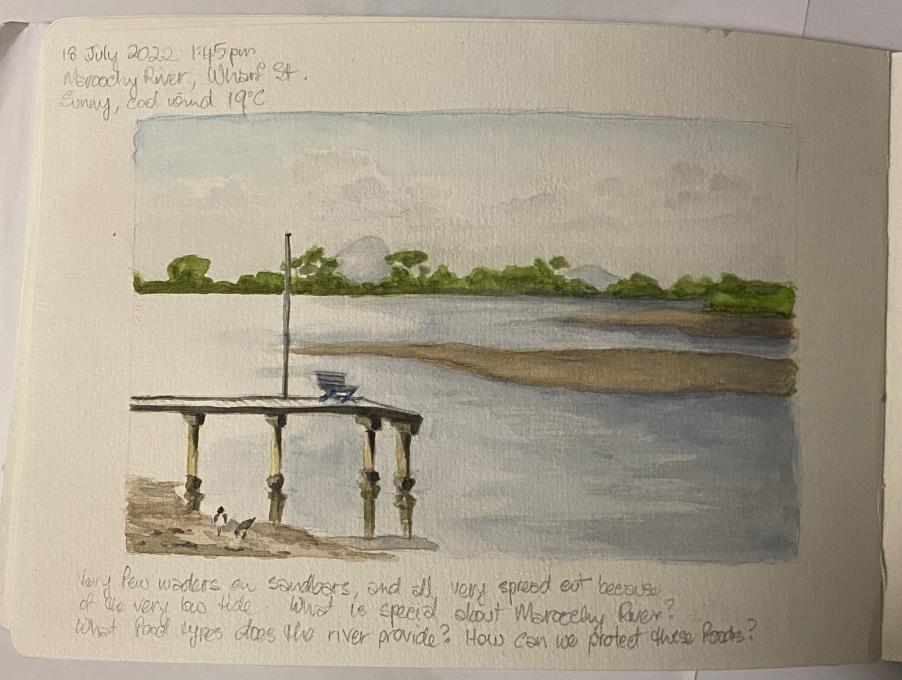

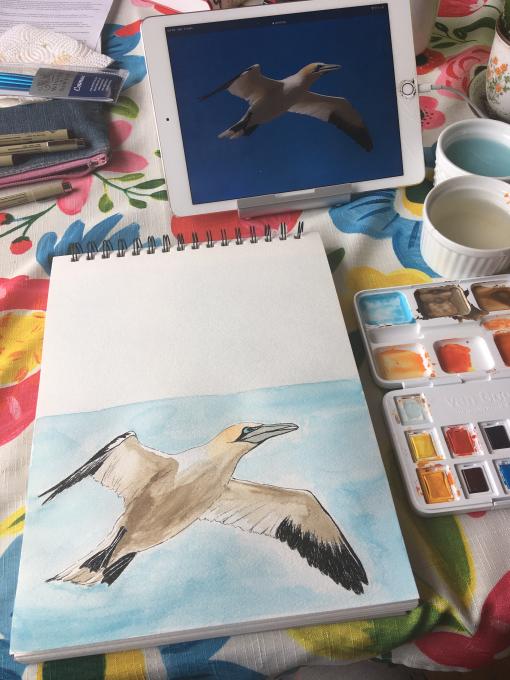
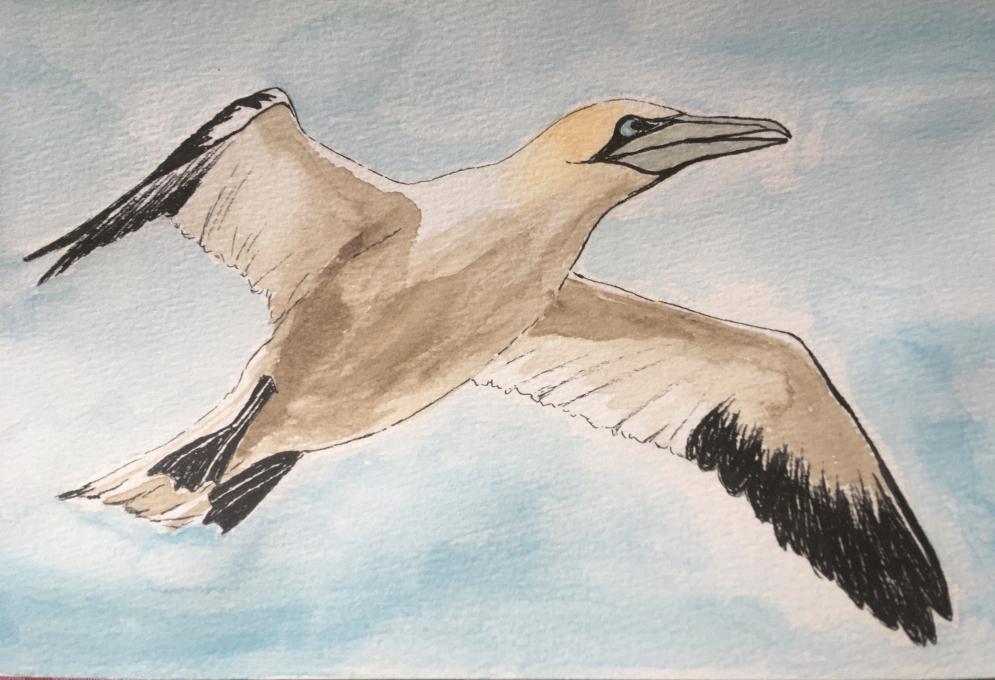
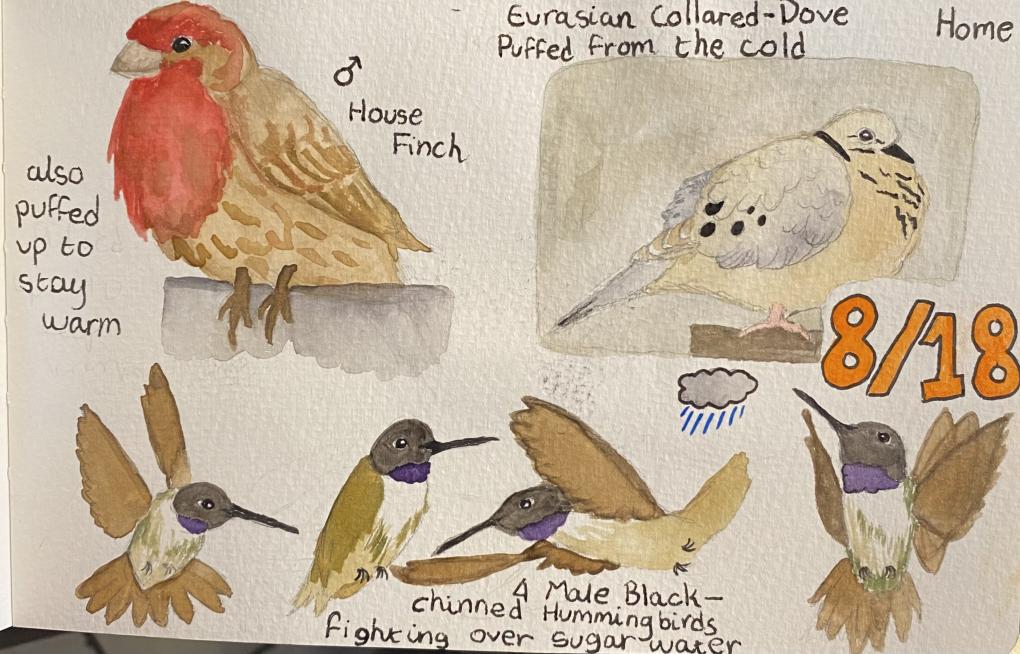
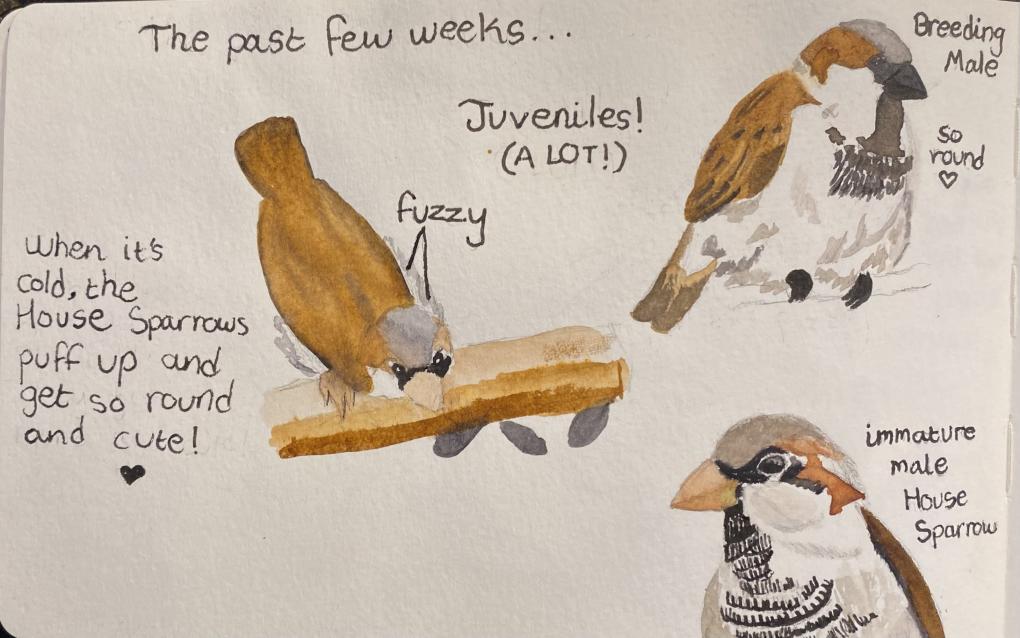 I find a flat and comfortable spot to sit and either from my phone's photos or from all around me take a pencil and sketch. I always wait to watercolor until I get home because it causes less trouble. This is an older journal page, but more recently I have used gesture drawing a lot more.
I find a flat and comfortable spot to sit and either from my phone's photos or from all around me take a pencil and sketch. I always wait to watercolor until I get home because it causes less trouble. This is an older journal page, but more recently I have used gesture drawing a lot more. 
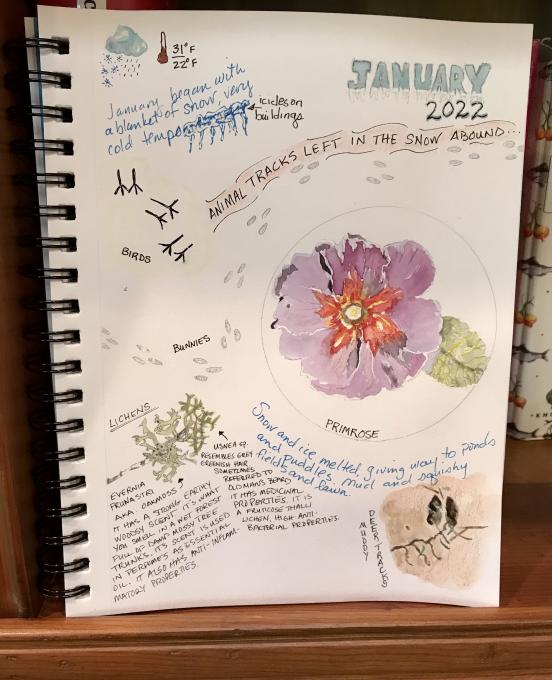
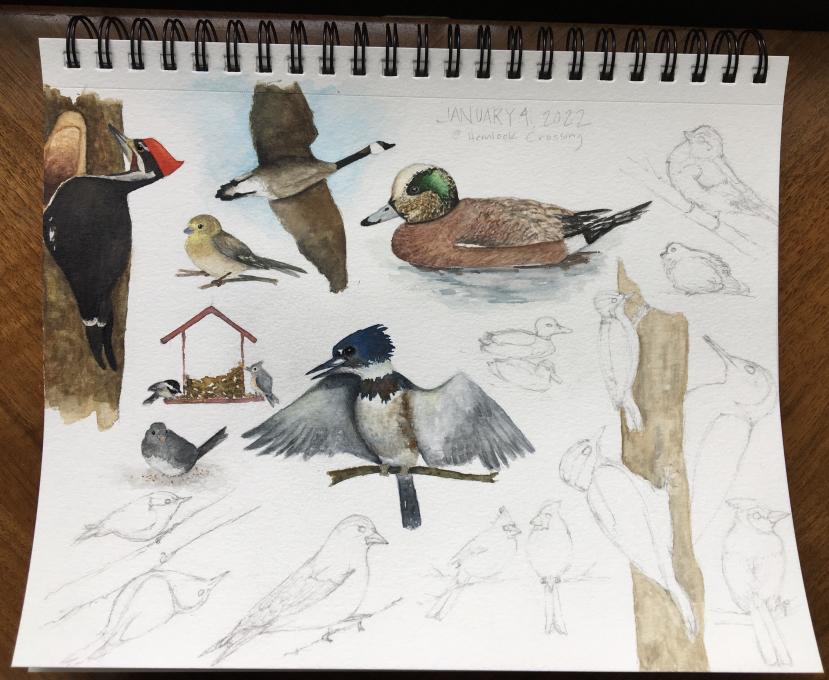
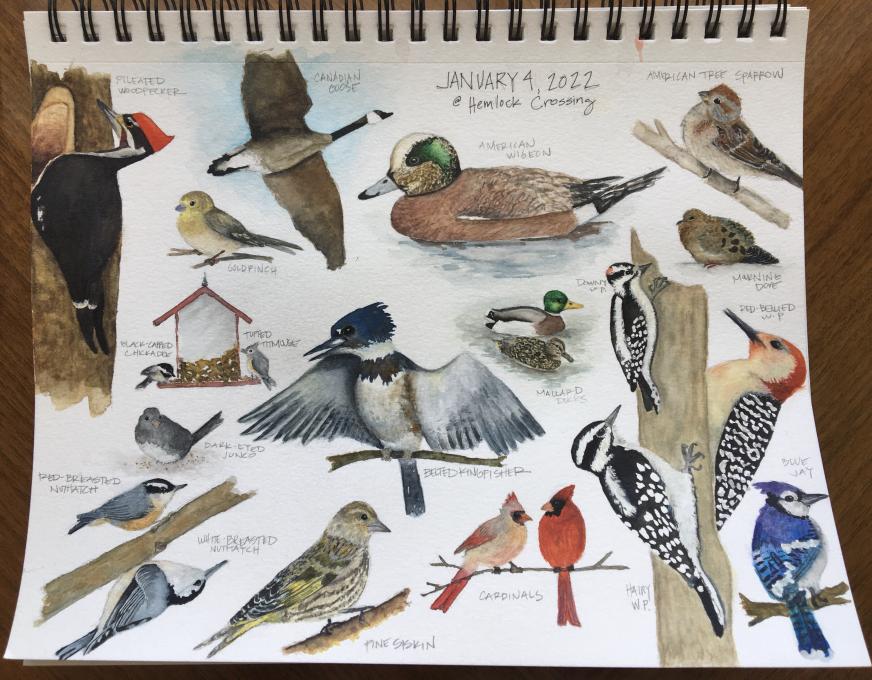
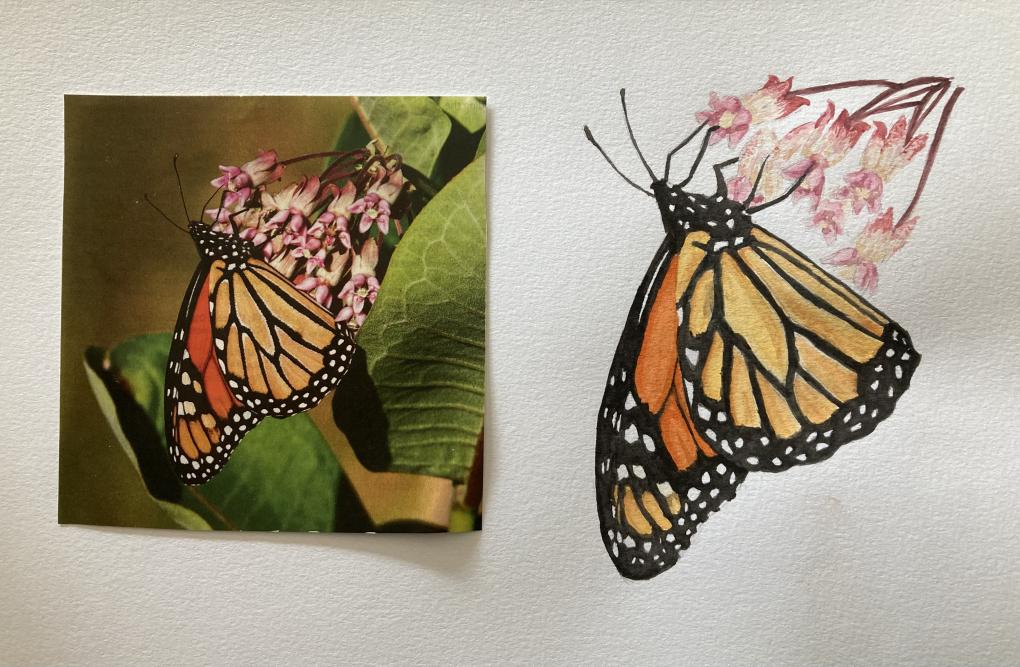 I am thrilled with the knowledge this course has imparted in both drawing and painting. It has been so rewarding. I have not completed this lesson’s exercise of getting out in the field yet. This is my practice at making a painting from start to finish, using a photo from an old copy of Birds and Blooms.
I am thrilled with the knowledge this course has imparted in both drawing and painting. It has been so rewarding. I have not completed this lesson’s exercise of getting out in the field yet. This is my practice at making a painting from start to finish, using a photo from an old copy of Birds and Blooms.